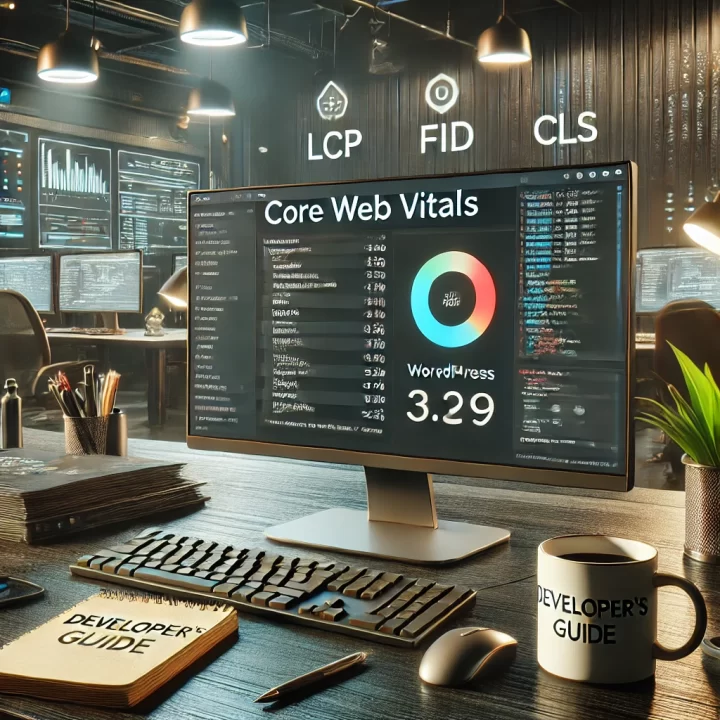Core Web Vitals have become a critical factor in determining website performance and user experience. As a WordPress developer, optimizing your site for these metrics is essential to improve SEO rankings and ensure visitors have a seamless browsing experience. In this guide, we’ll walk you through actionable steps to optimize WordPress for Core Web Vitals, focusing on Largest Contentful Paint (LCP), First Input Delay (FID), and Cumulative Layout Shift (CLS).
What Are Core Web Vitals?
Core Web Vitals are a set of metrics introduced by Google to measure user experience on websites. They include:
- Largest Contentful Paint (LCP): Measures loading performance. Aim for LCP to occur within 2.5 seconds.
- First Input Delay (FID): Evaluates interactivity. Strive for an FID of less than 100 milliseconds.
- Cumulative Layout Shift (CLS): Assesses visual stability. A CLS score of less than 0.1 is ideal.
These metrics are now part of Google’s ranking algorithm, making them crucial for SEO success.
Step-by-Step Guide to Optimizing WordPress for Core Web Vitals
1. Improve Largest Contentful Paint (LCP)
LCP measures how quickly the main content of your page loads. Here’s how to optimize it:
- Optimize Images: Compress and serve images in next-gen formats like WebP. Use plugins like Smush or ShortPixel.
- Enable Lazy Loading: Delay loading offscreen images until users scroll down. WordPress supports lazy loading by default, but you can enhance it with plugins like a3 Lazy Load.
- Use a Content Delivery Network (CDN): Distribute your content across multiple servers globally to reduce latency. Consider using Cloudflare or StackPath.
- Minify CSS and JavaScript: Reduce file sizes by minifying CSS, JS, and HTML. Plugins like Autoptimize can help.
For more tips on improving website speed, check out our guide on optimizing WordPress performance.
2. Reduce First Input Delay (FID)
FID measures the time it takes for a page to become interactive. To improve FID:
- Optimize JavaScript Execution: Defer or asynchronously load non-critical JavaScript. Use plugins like Async JavaScript.
- Reduce Third-Party Scripts: Limit the use of third-party scripts, such as ads or analytics, as they can delay interactivity.
- Use a Lightweight Theme: Choose a fast, optimized theme like GeneratePress or Astra.
3. Minimize Cumulative Layout Shift (CLS)
CLS measures unexpected layout shifts during page loading. To reduce CLS:
- Set Dimensions for Images and Videos: Always define width and height attributes for media elements.
- Avoid Dynamically Injected Content: Ensure ads or banners don’t push content down unexpectedly.
- Use Web Fonts Wisely: Preload critical fonts and use
font-display: swapto prevent layout shifts.
For more insights on improving visual stability, read our post on fixing layout shifts in WordPress.
Tools to Monitor Core Web Vitals
To track your progress, use these tools:
- Google PageSpeed Insights: Analyze your site’s performance and get actionable recommendations.
- Lighthouse: A Chrome DevTools feature to audit your site’s Core Web Vitals.
- GTmetrix: Monitor loading times and identify bottlenecks.
Additional Tips for WordPress Optimization
- Enable Caching: Use caching plugins like WP Rocket or W3 Total Cache to reduce server load.
- Upgrade Hosting: Switch to a faster hosting provider like SiteGround or Kinsta.
- Regularly Update Plugins and Themes: Ensure compatibility and security by keeping your WordPress ecosystem up to date.
Conclusion
Optimizing WordPress for Core Web Vitals is no longer optional—it’s a necessity for staying competitive in search rankings and providing a superior user experience. By focusing on LCP, FID, and CLS, you can significantly improve your site’s performance and SEO.
For more WordPress optimization tips, explore our WordPress performance guide and other resources on ajaykhandal.com.



